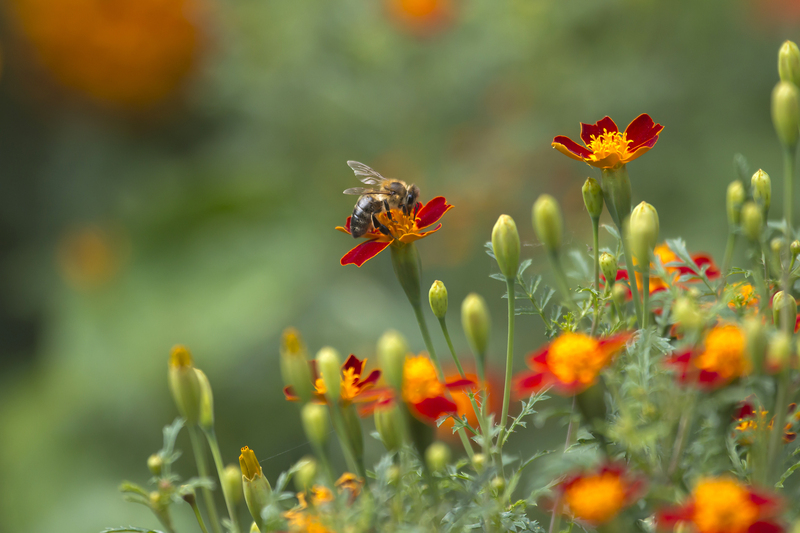Green Thumbs Against Global Warming: Gardening's Role
Posted on 14/08/2025
Green Thumbs Against Global Warming: Gardening's Role
Global warming has become one of the most pressing environmental challenges of our time, impacting ecosystems, economies, and communities worldwide. Amid the search for innovative solutions, an age-old practice has emerged as a formidable weapon in the fight against climate change: gardening. Uniting communities, improving air quality, and sequestering carbon, gardening's role in combating global warming offers hope--one green thumb at a time.
Understanding Global Warming and Its Impact
Climate change, driven chiefly by excessive greenhouse gas emissions like carbon dioxide and methane, causes global temperatures to rise. This results in more frequent wildfires, longer droughts, melting glaciers, and intensifying storms. The implications extend to food supplies, wildlife habitats, and human health. Without significant intervention, the deteriorating climate threatens the planet's future.
What is Global Warming?
Global warming refers specifically to the rise in average global temperatures due to human-induced emissions of greenhouse gases.
Common sources of greenhouse gases include:
- Burning of fossil fuels like coal, oil, and gas
- Deforestation and land-use changes
- Industrial processes
- Agricultural activities
Every step toward reducing our carbon footprint contributes to a more livable planet--the simple act of gardening included.

How Gardening Fights Climate Change
You might ask: Can digging in the dirt and planting a few flowers or vegetables make any real difference? Surprisingly, the answer is unequivocally yes. When practiced thoughtfully, gardening in the age of global warming is a multifaceted strategy against climate crises.
Carbon Sequestration: Plants as Earth's Lungs
All plants, from mosses to towering oaks, absorb carbon dioxide during photosynthesis and store it within their tissues. This naturally removes CO2 from the atmosphere, a notable factor in cooling the planet.
Key ways gardening sequesters carbon:
- Trees and shrubs capture and store carbon for decades, even centuries.
- Lawns, when managed with low-input practices (minimal fertilizers or mowing), also lock up carbon in the soil.
- Composting organic matter builds soil carbon reserves while reducing greenhouse gas emissions from landfills.
Urban Gardening and Heat Islands
Cities face a unique threat in the form of urban heat islands: areas dramatically warmer than their surroundings due to asphalt, concrete, and lack of vegetation. Gardens, green roofs, and tree canopies counteract this effect by:
- Providing shade and cooling via plant transpiration
- Improving air quality by absorbing pollutants
- Filtering rainwater and reducing runoff, which lessens flood risks
The Many Forms of Climate-Smart Gardening
Not all gardens are created equal. To maximize their positive environmental impact, gardeners should practice the most effective and sustainable techniques. Here are innovative approaches where gardening against global warming truly shines:
Permaculture and Regenerative Gardening
Permaculture is a philosophy that emphasizes working with natural systems to create sustainable landscapes. Key characteristics include:
- Minimal disturbance of soil (no-till methods)
- Using native and drought-resistant plants
- Creating closed-loop systems for water and nutrients
Pollinator Gardens and Biodiversity
Diversity in the garden isn't just beautiful--it's vital. Biodiverse gardens featuring native flowers and shrubs not only attract bees, butterflies, and birds, but also:
- Increase natural pest control (less need for chemical pesticides)
- Strengthen plant resilience to climate stress
- Promote the long-term health of ecosystems
Edible Gardens: Food, Not Fossil Fuels
Growing your own food drastically cuts down on the carbon footprint associated with large-scale agriculture, processing, and transportation. Edible gardens:
- Eliminate the need for packaging and long-distance shipping
- Allow for organic, pesticide-free produce
- Encourage community sharing and reduce food waste
Environmental Benefits of Gardening for Climate Action
Gardening's advantages stretch far beyond aesthetics. A thoughtfully cultivated garden addresses multiple environmental and social challenges tied to climate change:
Soil Health and Erosion Control
- Roots hold soil together, preventing erosion caused by heavy rains and wind.
- Healthy soil harbors diverse microorganisms that help decompose organic matter and store nutrients.
- Well-managed soils act as natural carbon sinks, counterbalancing emissions.
Water Management
- Rain gardens and permeable landscapes absorb stormwater runoff, replenishing groundwater and reducing flood risks.
- Gardening with mulch, compost, and drought-tolerant plants maximizes water retention, especially essential in drought-prone areas.
Waste Reduction
- Composting kitchen and yard waste returns nutrients to the soil instead of landfills, curbing methane emissions--a greenhouse gas many times more potent than CO2.
- Reusing garden "waste" (leaves, twigs, clippings) supports closed-loop sustainability.
Wildlife Habitat and Pollinator Support
- Gardens offer sanctuary for insects, birds, and small animals whose habitats are increasingly threatened by urbanization and climate change.
- Pipevine swallowtails, mason bees, and native songbirds rely on pesticide-free habitats during critical life stages.
Gardening as a Community Climate Solution
The power of many hands cannot be underestimated. Community gardening unites individuals, strengthens bonds, and multiplies impact:
- Enhances food security by supplying fresh, local produce
- Fosters environmental stewardship among children and adults alike
- Transforms vacant lots into productive, carbon-capturing green spaces
- Encourages knowledge sharing on sustainable gardening practices
Gardening's Role in Personal and Emotional Resilience
The benefits of gardening in the face of global warming are not just planetary--they're personal.
- Gardening has been shown to reduce stress, anxiety, and depression, offering a sense of control and accomplishment in uncertain times
- It provides hands-on environmental education for all ages
- Spending time in nature promotes a deep connection with the ecosystems we're striving to protect
Best Climate-Friendly Gardening Practices
Ready to join the movement? Here are actionable strategies for maximizing your garden's impact on global warming:
- Plant native species: Native plants require less water, fertilizer, and maintenance while supporting local wildlife.
- Eliminate synthetic chemicals: Avoid pesticides and fertilizers that release greenhouse gases or harm soil microbes.
- Compost organic waste: Build healthy soil and reduce landfill emissions.
- Practice water-wise gardening: Use mulch, rain barrels, and drought-tolerant plants.
- Choose trees wisely: Select species adapted to future climate conditions and space them for optimal growth and carbon capture.
- Create layers: Incorporate ground covers, shrubs, understory, and canopy trees to maximize biodiversity and carbon storage.
- Reuse and recycle: Upcycle containers, build soil with organic matter, and repurpose materials to minimize your garden's carbon footprint.
The Global Impact: Scalable Solutions
When multiplied across neighborhoods, cities, and continents, gardening against climate change offers scalable solutions. Governments and organizations are increasingly recognizing the role of urban greening projects, school gardens, and reforestation efforts as vital parts of national climate strategies.
Policy and Research Initiatives
- Many cities now incentivize green roofs, community gardens, and tree planting as part of their climate action plans.
- Universities study how urban forests and gardens can optimize carbon capture.
- Global programs like The Trillion Tree Campaign and The Great Green Wall seek landscape restoration on an unprecedented scale.
Inspiring Examples of Gardening Against Global Warming
- Singapore's Gardens by the Bay: This urban nature park integrates vertical gardens and supertrees, cooling the city and demonstrating the power of green infrastructure.
- Detroit, Michigan: Community gardens have transformed abandoned lots into sources of fresh food, vibrant flowers, and carbon-sequestering green space.
- Permaculture farms worldwide: Restoring degraded lands from Kenya to Australia, these projects blend indigenous wisdom with modern science to heal ecosystems and empower communities.

Conclusion: Growing Hope in a Warming World
In the global battle against climate change, every action counts. By cultivating gardens--whether on rooftops, in backyards, or in shared community plots--individuals can make a real, measurable difference. Green thumbs against global warming represents more than planting seeds; it's about nurturing a sustainable future for all living beings.
As more people grow their ecological awareness alongside their tomatoes and tulips, we witness the blossoming of climate solutions rooted in care, creativity, and community. It's time to get our hands dirty--for the planet, for our health, and for generations yet to come.
Frequently Asked Questions: Gardening and global warming
- How can I start a climate-friendly garden? Begin by choosing native species, composting, reducing chemical use, and planting a mix of trees, shrubs, and ground covers.
- Does container gardening help against climate change? Yes! Even potted plants absorb carbon dioxide and provide cooling effects, especially in urban spaces.
- Are lawns good for the environment? Lawns can store carbon if managed without high water and chemical inputs; replacing turf with wildflowers or vegetables is even better.
- Why are urban gardens important? Urban gardens reduce heat islands, filter pollutants, and provide food security in underserved areas.
Put your green thumb to work--against global warming today!



